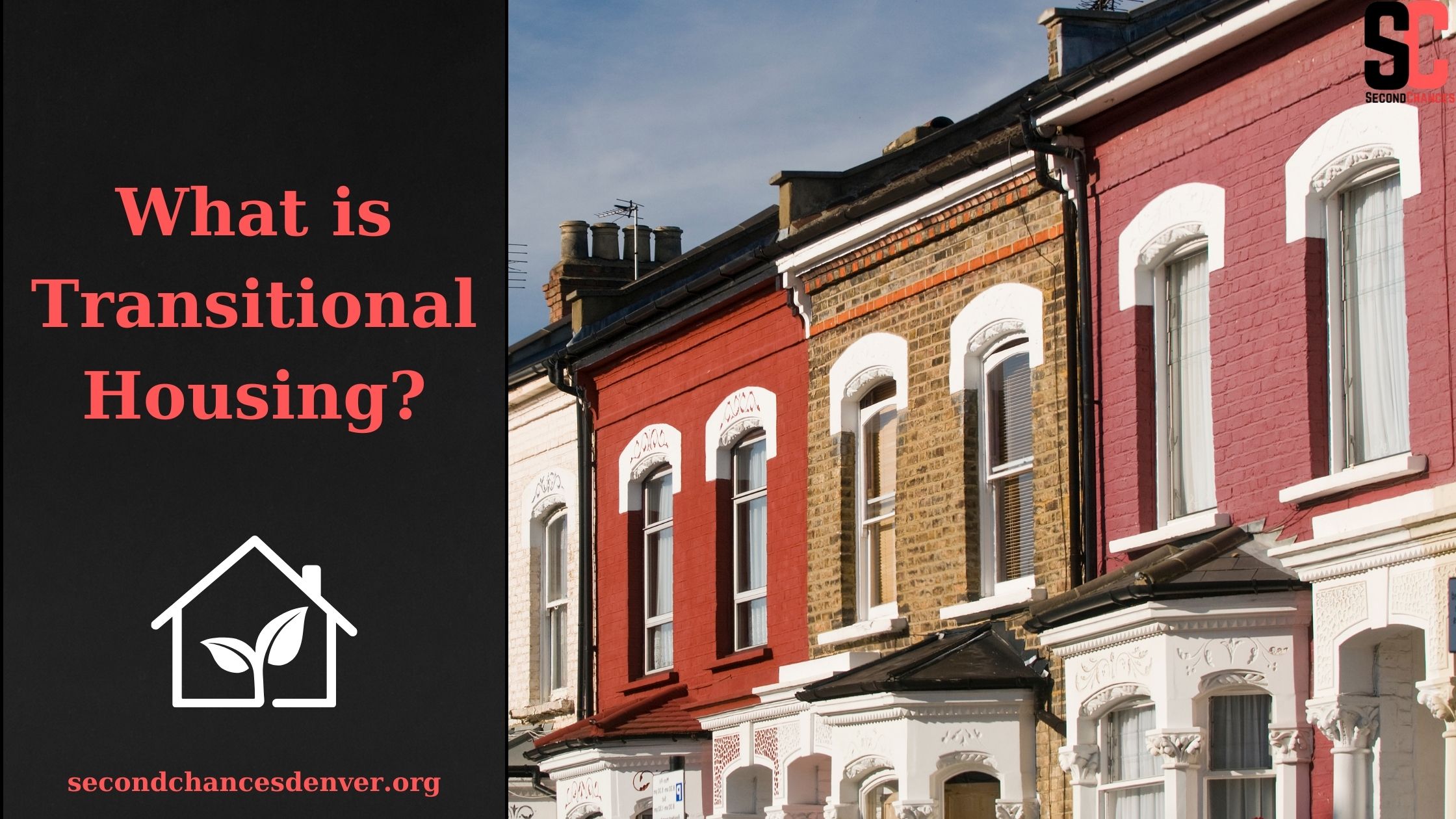Want to know What is Transitional Housing? How does it work? and who pays for it? You’re on the right page.
Since the early 1900s, transitional supportive housing has taken on many forms and meanings. The definition of transitional housing and its structure vary, but we’re here to clear up any confusion.
This article explains What is Transitional Housing, why it exists, and how to find transitional housing in the United States.
Now, let’s dive into the topic.
Table of Contents
What is Transitional Housing?
Transitional housing, also known as supportive housing, is a type of temporary housing offered by communities. These homes provide housing and support to marginalized, vulnerable populations who lack the resources and money to provide for themselves.
The homeless, recovering addicts, domestic violence victims, and formerly incarcerated individuals may all benefit from supportive housing. As well as sleeping and living space, residents will be provided with resources and support for reestablishing themselves.
How Does Transitional Housing Work?
The purpose of transitional housing is to eliminate homelessness through supportive housing. There will be no permanent homes here, but it is a way to help homeless people escape their plight. They may stay in this housing system for one to 24 months to get their feet under them again and find a permanent place to live.
A number of faith-based organizations offer assistance to homeless and destitute people. Homeless people can receive transitional housing facilities as a different ministry service without paying any fees or costs. Government assistance is also provided to homeless and abused individuals to ensure they have access to supportive housing. A nonprofit organization also offers assistance to people with housing needs.
The purpose of transitional housing is to bridge the gap from a crisis – such as abuse or homelessness – to permanent housing. Compared to other emergency homeless shelters, transitional supportive housing is typically more private. The purpose of transitional housing is to provide a safe space for people to process trauma, work on the issues that caused their homelessness, and build a supportive network for their future.
Do I Need Transitional Housing?
Transitional housing can serve as a stepping stone toward independence after residential treatment. Individuals who are looking for sober living or transitional housing should consider these programs:
- During treatment, they learn skills that will help them live a healthy and fulfilling life.
- Having difficulty returning to independence and requiring further assistance.
- In need of assistance to find work, learn new skills, or gain economic stability following addiction treatment.
- During their reintegration back into society following treatment, they remain drug and alcohol-free.
- A commitment to the transitional living home’s rules, including drugs and alcohol screenings, abstinence from substance abuse, participation in treatment, and maintaining respect for others.
In transitional supportive housing, you’re accountable for your actions, but you’re also free to live as you see fit and heal from addiction.
How is Transitional Housing Managed?
A transitional housing facility may be operated by a state government, a city government, a nonprofit organization, a church, or another nonprofit group.
Transitional housing facilities or networks may focus on specific groups, such as children, women, LGBTQ people, addicts, veterans, immigrants, and more. A transitional housing program funded by Housing and Urban Development (HUD) is also available throughout the U.S. to prevent or end homelessness.
How To Find Transitional Housing?
There are many resources available for transitional supportive housing, so one should be aware of where to find it. Depending on the state and city, this can vary. However, you may find many resources to get started at the National Alliance to end homelessness.
Continuum of Care
They act as first responders to homeless people and are the front door to services for those who are homeless. To find transitional housing, shelter, and other resources in your community, you may want to visit the community continuum of care.
Call 2-1-1
The 211 number can be contacted in any emergency. The 211 emergency number provides services around the clock. Other resources may be available, such as emergency shelter, housing, and food.
National Health Care for the Homeless Council
For people experiencing homelessness, there is a list of healthcare providers who come forward to provide health services.
What Are The Types of Transitional Housing?
There are several type of Transition Housing, some of that are given below:
Low Income Families
There are resources and experienced staff at transitional supportive housing facilities to help children, mothers, and fathers.
Publicity
Transitional housing staff assist families in securing and enrolling children in schools, securing health care, finding employment, and locating permanent housing, in addition to providing housing. Families may be able to find transitional supportive housing in private accommodations, apartments, or even small homes.
A Recovering Addict
People recovering from addiction typically live in transitional housing, sometimes known as halfway houses.
There are a variety of recovery facilities available, including group homes, apartments, and homes. These are usually less restrictive than rehabilitation centers that restrict a person’s freedom. People often have the freedom to come and go as they please as long as they follow the rules of the facility. There are some homes that require residents to work during the day, follow curfews, and undergo random or periodic drug testing to ensure their sobriety. Recovering addicts usually have to pay some form of rent, as well as cover their own expenses.
Recovery homes have a structured approach that encourages people to overcome their addiction, develop a support network, and reenter permanent housing prepared to succeed.
Veteran Homeless
The number of homeless people who are former military members is estimated at 11 percent in the United States. A homeless veteran is estimated to be 40,056 on any given night by the Department of Housing and Urban Development. The effects of post-traumatic stress disorder (PTSD) and substance abuse are also common among displaced or at-risk veterans.
You can reach the National Call Center for Homeless Veterans by calling 1-877-424-3838 if you are homeless or at risk of becoming homeless.
Besides providing housing for veterans, Volunteers of America also provides transitional housing. As well as helping veterans with addictions and other mental health challenges, the organization also provides various treatments. There are various program that provide Free Window replacement For Veterans with several benefits.
Victims of Domestic Violence
One in four women and one in seven men will experience physical violence from their intimate partners during their lifetimes, according to the Centers for Disease Control. Those experiencing domestic violence can find a variety of resources, such as transitional housing, to get out of a dangerous or violent situation.
National Domestic Violence Hotline 1-800-799-7233 can assist those experiencing domestic violence and at risk of becoming homeless or who are already homeless.
What Services Are Available In The Transitional Housing Program?
Depending on the needs of residents, various services and needs are available in transitional housing. Providing stability and shelter to families in need of housing is the primary purpose of transitional supportive housing.
Availability of Housing
Housing needs in transitional housing include apartments, private accommodations, and a single house. To enable them to go to permanent housing, schools, health services, and employment services are also provided.
Security and Safety
There should be a sky over homeless people and a risk at night for them. A transitional housing program can at least help them to live in safety and security, as this also reduces crime. For reasons of safety and security, the woman who is homeless as a result of domestic violence highly values Transitional supportive Housing.
Providing Emergency Shelter
Families and individuals who are homeless can find temporary housing at emergency shelters. In times of crisis, emergency shelters provide a safe, temporary home for those in need. A few days to a few weeks are typically the duration of a stay in an emergency shelter.
A Rapid Rehousing Program
In rapid rehousing programs, individuals and families are placed in permanent housing within a short period. Programs such as these provide short-term rental assistance, case management, and support services to assist individuals in securing and maintaining stable housing. Typically, rapid rehousing programs last for a few months.
Preventing Diseases
In the open sky, homeless people may suffer from different diseases. Living in transitional housing provides the homeless with a safe and sanitary environment, as well as a good quality of life.
Employment Assistance
Transitional housing is designed to keep people stable and dependent. This is also a priority, and they are getting back on their feet financially. During transitional supportive housing, job training, skill development, and job search interviews are available to assist with this.
The Journey To Freedom
After losing your house and becoming homeless, transitional supportive housing can surely improve your situation. In transitional housing, vulnerable people see their future, and they see it as hard to build such growth. Therefore, it is crucial to build your circumstance to one of growth and dependence.
What Are The Benefits of Transitional Housing?
The purpose of transitional housing is to provide stability and safety. Homeless youth can break free of this cycle if they are provided with the following benefits.
Stable and Safe Housing
Providing stable and safe accommodations for homeless youth is one of the most important functions of transitional supportive housing. Typically, this type of housing offers an independent living environment within a supportive setting. A sense of stability is essential to addressing other aspects of their lives, such as education, employment, and overall health.
CYDC offers transitional housing at its Berkeley County facility and at our North Charleston campus, where NuHouse and residential group homes are available.
Service Support
The purpose of transitional housing programs is more than just to provide a bed for the night. Youth receive comprehensive support services tailored to their specific needs. The role of social workers, counselors, and mentors is traditionally to help youth set goals, create personalized plans, and access resources to promote growth.
Enhancing Skills
As well as addressing immediate needs like food and shelter, transitional supportive housing also addresses long-term needs. By teaching essential skills such as budgeting, cooking, communication, and problem-solving, these programs promote self-sufficiency and self-reliance.
The development of life skills is essential to a successful transition to independence. Under the guidance of caring professionals, youth can practice and refine these skills in transitional housing programs due to their unique and supportive nature.
The Support of Education and Careers
Youth experiencing homelessness often experience disruptions in their education. It is estimated that 87% of these young people will drop out of school before earning a high school diploma – a critical asset for many employers. The goal of transitional supportive housing is to break the cycle of homelessness through education.
Tutoring, GED programs, college application support, and scholarship assistance are all provided through these programs. Moreover, these programs provide a path toward economic stability and self-sufficiency by promoting career exploration, building resumes, and preparing for job interviews.
Social and Emotional Well-Being
Experiencing homelessness can have a detrimental effect on a youth’s mental health and well-being. There are many youths living in transitional housing who have been traumatized, abused, or neglected. The programs provide a safe environment for personal growth and healing. A sense of belonging and support can be fostered through therapy, support groups, and mentorship that address youth’s emotional needs and help them build resilience and coping mechanisms.
FAQ
How is Transitional Housing managed?
Instead of living in shelters, homeless people should consider transitional housing. Homeless people are housed in transitional housing managed by state governments, city governments, and nonprofit organizations. Depending on the needs of a particular type of person, transitional supportive housing may take a variety of forms. Several channels are funded by the United States Department of Housing and Urban Development to prevent homelessness.
What is the purpose of transitional housing?
In fact, humanity is the sum of all things. The reality of being homeless, however, can be grim. It is possible that these people have suffered abuse and domestic violence as well as being homeless. There is at least a need to ensure their physical, mental, and emotional safety. The homeless people may also get relief from their homelessness and begin a new life here. In the case of homeless people, transitional supportive housing prevents crises.
What is the cost of living in transitional housing?
The needs of humans take precedence. Depending on where you live, transitional supportive housing may be more or less expensive. The cost of transitional housing may be minimal for some organizations. In most cases, it amounts to 30% of their monthly income. There is no doubt that transitional housing is affordable and easy to obtain.
Conclusion
It is possible to find the best transitional supportive housing solution for you or your family in a variety of forms. It isn’t possible to find something that fits every situation, but once you understand the resources, finding something that fits you will be easier.
The purpose of this piece is to inform you about transitional housing and homelessness in the United States, the reasons for its existence, and the resources available for finding transitional supportive housing in the United States.


